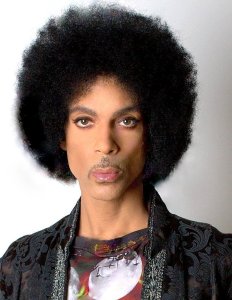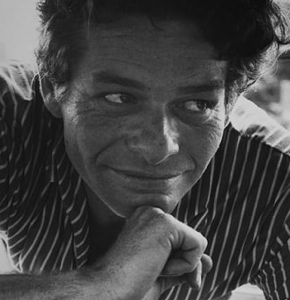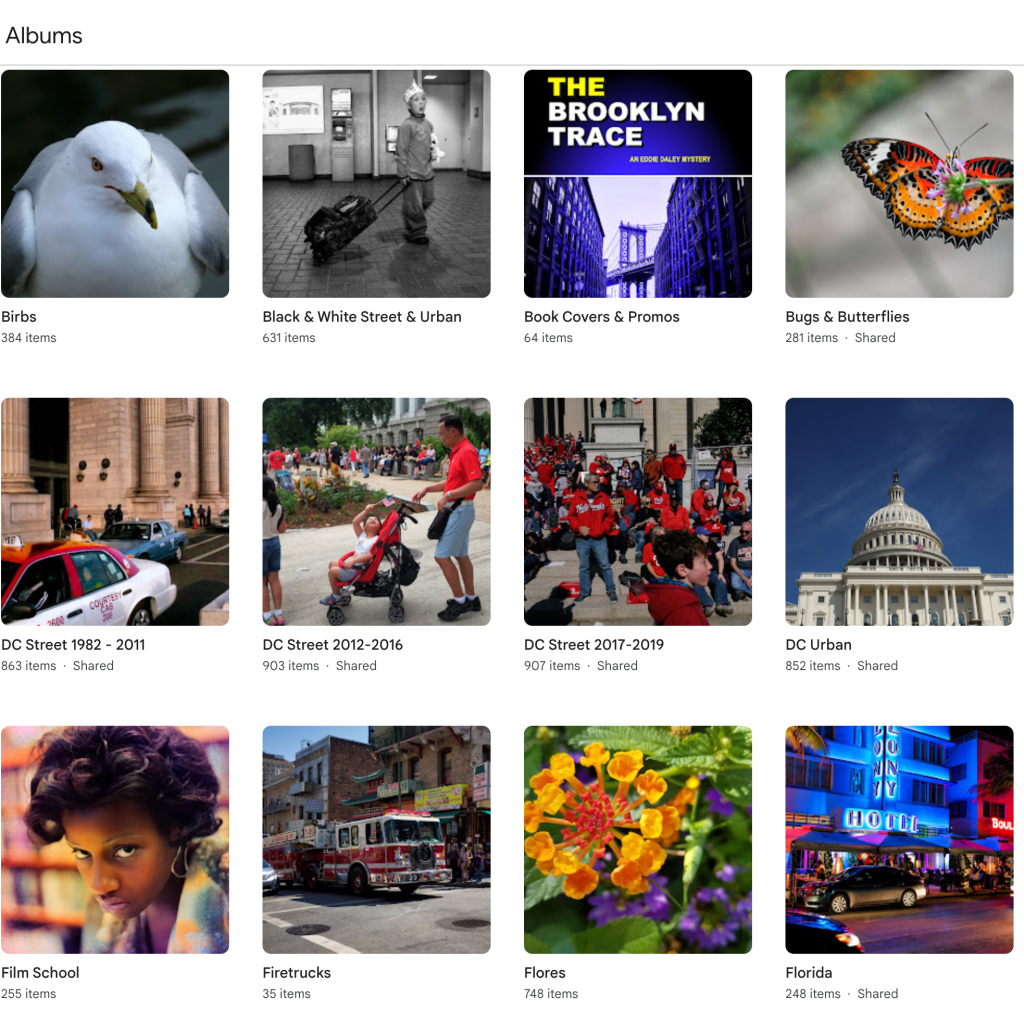In my experience, there are three distinct groups that artists fall into. The first are those I will call deliberate artists. They work, sometimes feverishly, to complete their art, producing pieces (if they are sufficiently skilled) that help to (re)define their class of art. If they fall short of that mark, you be can certain they have at least awed their friends and fans. The problem with that group is that they hardly ever make anything. I would place the likes of George R.R. Martin within that group. He may keep you waiting for about forever, but when he releases a work, at least you know what quality to expect.

The second and third types of artist are both prolific. There is first of all, the singularly focused artist, like Prince Rogers Nelson, who mostly stayed in his lane of singer-songwriter-musician, but produced thousands of pieces, often recording a song in a single day from hand-written notes he brought into the studio. Author Stephen King is another of this archetype, and though some would argue that he writes in different genres and is thus different, writing is writing. If all of your work revolves around the written word, I’m going to call you a writer. What’s the difference between G.R.R. Martin and King, then? At the end of the day, it’s volume. I won’t pretend to know one man’s work ethic versus the other, but if we assume they produce the same output, then King is about producing new work, while Martin is either producing work that never sees the light of day, or he spends a lot of time editing work he’s already produced.

The third type of artists are equally as prolific as the second, but they jump around so many genres that an initial view might trick you into thinking they’re the second type. My wife is such an artist. While I might produce several mediocre paintings while she works on a single masterful one, she’s also producing clothing she designs, fragrances, oils, sketches, recipes, or maybe she’s playing music or writing or any of the seemingly endless skills she has. People like Maria, my wife, are made of art.
I’m not quite there yet, having spent all my artistic life as a photographer and a writer. However, more recently, I’ve begun painting and sketching, and have learned that I can channel my apparently endless artistic energies in any number of directions. That isn’t to say that everything I produce is a masterpiece. Volume doesn’t ensure quality. It only ensures you’ve practiced enough that making quality art becomes possible. Show me a master of any artistic discipline, and I’ll show you someone who put in more hours (before, during, and after the process) than any of ell’s1 peers.
This article won’t attempt to tell you how to produce “good” art. For one thing, there is no consensus regarding what good actually means when it comes to art. Another reason is that what works for one person will not work for another. Producing good art requires some degree of talent (not as much as you think), a great deal of hard work, a lot of time, and fervent interest in whatever discipline you’re in. There are no shortcuts. So instead of my pretending I can tell you how to be a good artist, let’s instead discuss the broad steps you can take to become a prolific one.
I’ve been at art in one stage or another for over 50 years. Most of that was spent as a photographer, mostly doing street photography, but I’m also a novelist, poet, blogger, and more recently, a visual artist. I have a catalog of photos that numbers in the tens of thousands. If you’re interested, my style is probably most like Garry Winogrand’s or Helen Levitt’s except that I focus on color and composition. When I grow up, I want to be William Eggleston or Harry Gruyaert or Saul Levitt.

I’ve written 20 books , including 14 novels and 5 short story collections, and published 16 of them. One of my unpublished books is a poetry chapbook, but I have enough other pieces to fill several more volumes (and I might’ve considered culling them into books if I thought anyone actually reads poetry). Recently, I’ve taken up painting, and though I’m no Rembrandt Van Gogh, I knock out a couple of new pieces a month. Maybe there’s still time for me to be Grandma Moses. Er, Grandpa Moses.

Again, while I’m not attempting to claim all my produced work is of high quality, I will assert that neither is it low quality. Being prolific means that you have to allow yourself to bend the pages of your metaphorical creativity book. Some of the things you produce, once you’ve learned not to self-edit during the creative part of the process, will surprise you. Some of those surprises will be good; others will be disappointments. However, the more art you make, the more good art you will produce. Making good art, like anything acquiring other skill, takes reps.
Stephen Curry did not learn to shoot well by only putting up “good” shots on his “good days.” He shot. Then he shot. Then he shot. And when he didn’t feel like shooting anymore, he kept shooting. Shooters shoot; artists … art. Bad artists art sometimes.

There is no other way to greatness. If anyone tells you there is, they are 1) lying, or 2) wrong and 3) probably not great at anything. If you want to be great, a good first step is to learn how to unlock your own creativity. Being prolific doesn’t mean put out tons of crap. Being prolific means learning to produce a consistent stream of quality (but not perfect) work in multiple disciplines. I’m certain there are a number of ways to do so, but here are mine:
Ask Yourself If You Enjoy Making Art – before you can expect to produce art in quantity, you must be motivated. Neither money or fame will motivate you to succeed … mostly because if you’re an artist, you’re unlikely to achieve either. You can be the exception, but most artists make a pittance from their art. That includes most novelists. Artistry is driven by love and interest in learning what it takes to improve. If you don’t have both in abundance, read no further. We’ve already discovered your limiting factor. Find something you love, and do that instead.
Make or Find a Comfortable Space – My space is my office, which I’ve situated in a bedroom in our home. I have quiet, the right kind of lighting, and music. Some of you will need quiet, others may do better in a coffee shop, surrounded by the world. Find your place and do much of your work there.
Work Quickly and Finish What You Start – I don’t mean that you need to work carelessly, but part of your goal should be to finish. Being goal-directed means that you will have to learn to solve the problems that will invariably arise with your art. Some of that may happen during the creation process or during editing, but you will be forced to tackle the things you find difficult. That is the path to growth. Prince was notorious for how quickly he put songs together, often playing all the instruments and still finishing in a single day. His full-time engineer later stated she got so used to his workflow and ethic that she had trouble dealing with folks who took all day to get a single guitar solo right.
So what does “work quickly” mean? Well, your mileage will vary, but as an example, when I’m shooting on the street, I handle the camera settings up front, and then shoot quickly. To the extent I make adjustments, they’ll be in seconds or just to keep people around me from knowing if I’m shooting. I’ll click off hundreds of shots in a couple of hours, sometimes fewer. If there are issues, I can fix them in the virtual darkroom, so I don’t fret. I’ve now been doing this long enough that there aren’t too many issues.
When writing, I usually finish a novel’s first draft in around 6 weeks. I don’t start writing until I know what I’m about to write. I’ve finished books in as few as 17 days. I write a chapter in a day or two. The key is to focus on expressing what is inside of you — the emotion, the vision, the idea — rather than inhibiting yourself by thinking you’re supposed to do everything perfectly the first time. Editing and touching up is your best friend in the art process. Focus on finishing, and set yourself incremental goals: this chapter, that part of the painting, this solo, that stanza. You can make it all pretty later.
Have High Standards, but Don’t Be a Perfectionist – Perfection is the enemy of art. Perfect art, to be honest, eats donkey turds. There is a reason why people can still pick out AI art: it’s so perfect, that the otherwise normal imperfections in it stick out. People love the imperfections in art. It’s what humanizes it. Prince was not a perfectionist. I doubt Steph Curry worries too much about the shots he misses. (He’s too busy taking more.) I know Winogrand wasn’t a perfectionist. He couldn’t imagine why anyone would buy his art. Hell, he never even bothered to develop thousands of rolls of film he shot. For him, the process mattered, not the results. He arted for the sake of art. You will drive yourself crazy trying to be perfect, and you won’t ever reach it. Why?
Because by the time you reach any level of perfection you’ve been seeking, you will have learned more and will no longer think that’s what perfection looks or sounds like. Perfection is the endpoint of an infinite highway, and you will die on the way. Just enjoy the journey.
Be Disciplined in Your Approach – I won’t spend too much time here, because I suspect either you already know how to be disciplined or you’ve convinced yourself that being “free” is your best approach. If that’s true, fine. But you best have an idea of how to produce actual results without feeling “confined.” Once you’ve figured that out, do it consistently. If you want to know what I mean, Google “Steph Curry workout” and see what you come up with. I don’t care what your work flow is, just have one and do things the same way every time. You can work from home, work in an office, work from the zoo. I don’t care. But when you get to wherever you’re going to work, cut out distractions and focus.
Art Is a Daily Business – When I am writing, I write every day, or at least every day that I’m able. There is no alternative to this. You build habits via consistency. If you don’t write daily, then you’re building the habit of not writing. It will be hard to break your non-writing addiction to do the occasional line. When I’m trying to write books, I target 2,000-words per day by the end of the book. I’ll usually do 1,500 to 5,000 per day as a result. Some works take longer, as time spent increases exponentially with complexity, but when I start a project, I know pretty much what my pace should be and when I’ll finish. The reason for that is that I approach it like a job, and so I know how I’ll proceed.
Take Breaks Whenever You Need Them – Contrary to popular belief, art is freaking hard. If it isn’t hard, you’re doing it wrong. When you’re tired, and especially when you are really sick of seeing the piece you’re working on, take a break. If you aren’t tired but want to punch your latest painting in the face, work on something else. You are being a professional, not a slave.
Use the things that stimulate your creativity (unless it’s drugs or alcohol) – I use music, though what kind of music works changes every year, and with each project. I’m currently in an extended reggae and jazz phase, but all types of music have worked in the past. I also use one discipline to excite the other. Photography naturally leads to painting, and since travel leads to photography, I look forward to trips for a energy boost. I also surround myself with art, and my best friend is constantly arting, so I do to.
Don’t Fear Pushing Inhibitors Aside – In my experience, mind-altering substances are inhibitors to art. I don’t use them, though many artists have. They’re mostly dead now.
However, this also applies to people. If the people around you aren’t supporting your art, they are telling you to choose them and not what’s in your heart. Fuck them. Painful or no, you will find people who support you and your artistic vision. Unless you just suck. Then, you probably need to practice more. Do that and then re-engage to see if the people around you are more supportive.
If your inhibitors are resource constraints (due to job, money, kids, money, space, money, global warming, etc.) come up with a realistic plan on what you can achieve with the resources available. Maybe if you’re a full-time parent of three you can’t be prolific right now. However, you can produce something, and maybe art is something you can share with the kids. Don’t beat yourself up if you don’t have the ability to do more art. Just do what you can with what you have. Shouldn’t that be the definition of “prolific” anyway?
“I used all my spare time on my art.”
Dude. You’re rocking it.
Art Can Happen Anywhere; Look for It – All I’ll say about this is that art comes from your mindset. If you’re looking for it, you will find it. Nature is amazing, and man-made structures were designed with art in mind. Keep an open mind and something handy to capture whatever you find: a notebook, your phone, your memory.
You Aren’t Producing Art; You’re Producing a Legacy – Prince had a vault. He would record brilliant songs and then store them in the vault because they didn’t fit the project he had in mind. You should produce work for yourself, sure, but I find it’s more effective to think of my legacy. Maybe my grandsons won’t ever see or care for my art, but maybe their kids will. I intend for them to find a shed load of it. If you want to be remembered (in part) for your art, leave them something to remember you by. Remember my stupid “metaphorical creativity book” analogy? Well, if you focus on producing art, you can turn it into an actual book.
Get out there and art your heart out.
–
- “Ell” is my gender-neutral pronoun, derived from the Spanish el/ella. I won’t use they/them because using a plural word for a singular subject is confusing and lazy. ↩︎
